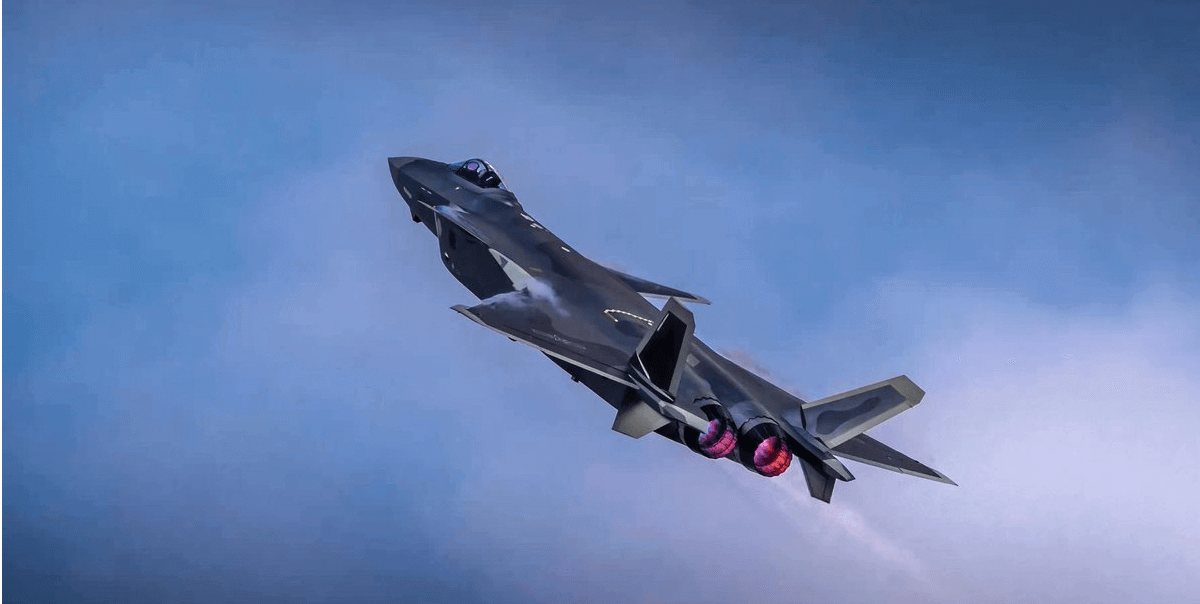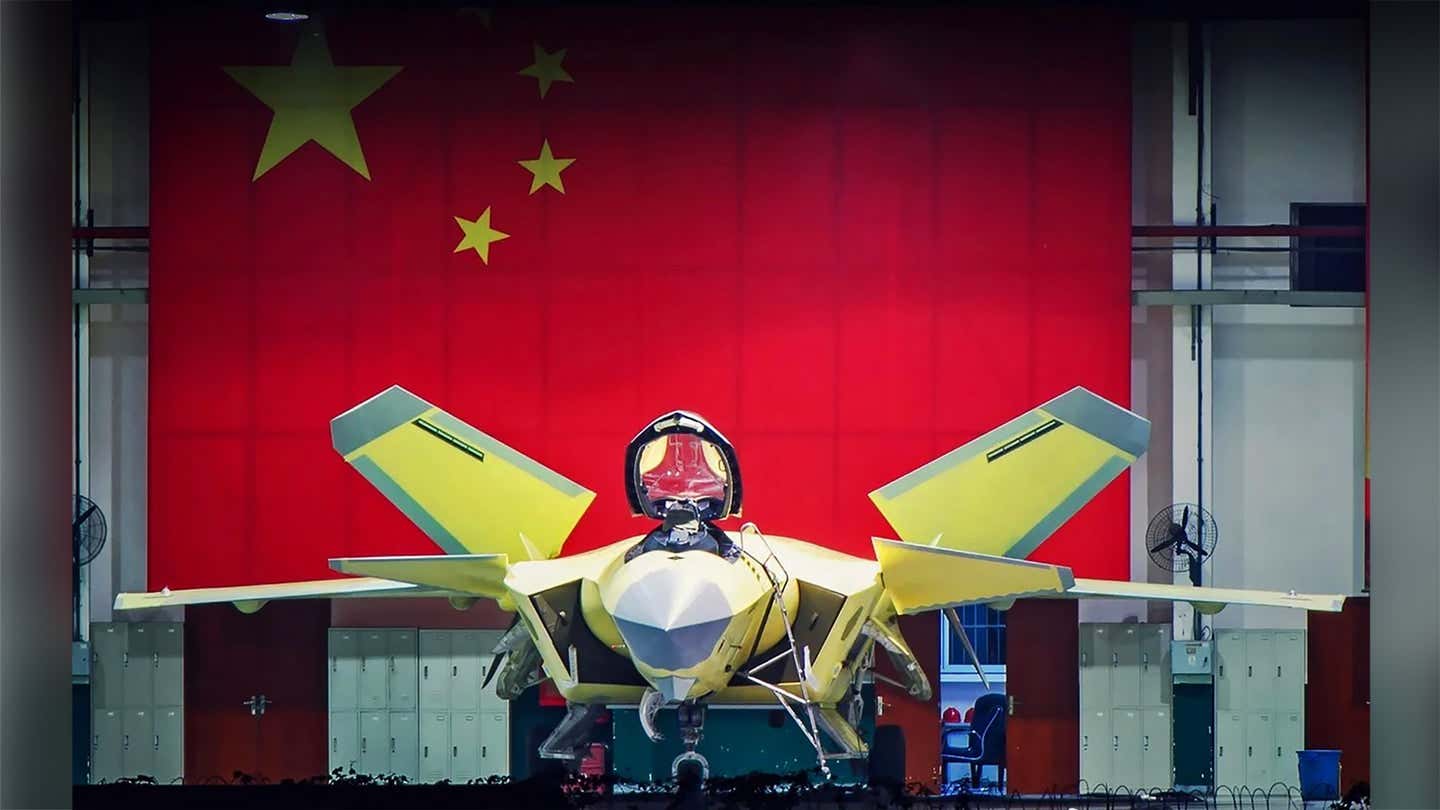In what could significantly raise the stakes for China in the Indo-Pacific, Beijing has decided to ramp up the production of its J-20 stealth fighter jets. The move follows an uptick in the number of US F-22 Raptors and the F-35 Lightning II jets in its neighborhood.
A Whopping $18.7B In Backlog, US Weapons Supply To Ukraine Is Leaving Taiwan Defenseless Against China?
Ukraine War: Improved Tactics Help Russian Aerospace Forces To Dominate Airspace, Strike Hard & Avoid Losses
Citing military sources and defense experts, Hong Kong-based South China Morning Post recently reported that China is leveraging world-class pulsating production lines to speed up deliveries of its superior J-20 Mighty Dragon stealth aircraft fighters.
The development follows the decision of the US Air Force to send its F-22 Raptor fighter jets to the Kadena Air Base in Japan earlier this month to replace the antiquated F-15 Eagles.
A press release from the US Pacific Air Forces said the F-22A Raptors arrived at Kadena from Alaska on November 4.

Later in the month, in response to the launch of an Intercontinental Ballistic Missile (ICBM) by North Korea, four South Korean F-35A jets and four US F-16 fighters flew in a coordinated assault formation and practiced dropping laser-guided GBU-12 bombs at Pyongyang’s launch facilities.
US allies in the region, South Korea and Japan, have their respective operational fleets of US-imported F-35 fighter jets. Meanwhile, Singapore operates the F-35 Lightning II fighters in the broader region. China’s defense partner, Thailand, has also decided to purchase the F-35 fighter and awaits the American nod.
As tensions continue to grow between China and its regional rivals, the overcrowding of the Chinese neighborhood with these US-made stealth aircraft hasn’t gone unheeded by Beijing and officials in the Chinese Military Commission (CMC).
A military insider reportedly told the publication that the enhanced production of J-20s is intended to balance the United States expanding deployment of its leading air-superiority aircraft, the F-22, and another fifth-generation stealth jet fighter, the F-35, to the region.

According to the reports, new pulsing production lines and indigenous engines have increased the number of J-20s to equal, if not more, than the number of US F-22 Raptors. Lockheed Martin manufactures the F-22 and F-35 fighter jets and uses pulsating production lines.
Based on earlier estimates, China has constructed at least 200 J-20 jets. In contrast, Lockheed Martin delivered just 186 F-22 Raptors before permanently closing the assembly lines in 2012.
According to some accounts, the US has far fewer Raptors operational than the Chinese J-20s. The Raptors are set to be replaced by the next-generation fighter jet currently under development.
China has been upgrading its J-20 Mighty Dragons for several years to counterbalance the US fifth-generation fighter jet. By ramping up the production of the J-20, it appears ready to deploy these aircraft to deter the US and its allies in its region.
The Mighty Dragon Will Take On US F-22, F-35
The J-20 entered service in 2017 following the deployment of more than 100 F-35s to Japan and South Korea by the United States. Although China has not specified the number of J-20s deployed, PLA Air Force spokesman senior colonel Chen Jinke said they were operational in all five PLA theatre commands.
The Chengdu Aircraft Industry Group (CAIG) began mass production of the J-20 in 2020 after the Central Military Commission leadership opted to replace the aircraft’s original Russian Saturn AL-31 engines with locally built WS-10C Taihang engines.
At the Zhuhai Air Show 2022, China exhibited a turbofan engine with a 2D thrust vectoring control nozzle, providing enhanced maneuverability and stealth capability to the J-20.
This was significant as China had announced in January that it would begin upgrading the engines of the J-20 stealth fighter jet with modern technology to match the capability of the American F-22 Raptors.
In addition, the Chinese engineers have been working on the WS-15, a high-thrust engine that will let the J-20 close the performance gap with the F-22. However, that project has slipped behind schedule and will begin production next year, requiring CAIG to adopt the WS-10C as a bridging solution.
China has not shied away from projecting the J-20 as the cornerstone of any air warfare it may have to engage in. In August, the PRC deployed the J-20 for the first time in live-fire military drills surrounding Taiwan in response to US Speaker Nancy Pelosi’s visit to the island nation.

Then, months later, the J-20 was publicly exhibited at the Zhuhai Air Show, where two planes landed and parked for a few hours. The J-20s have already been pressed for combat patrols and have had their brush with the US F-35 fighter jet.
On its part, the US is aware of the growing Chinese air power and the prowess of the J-20s. A 2016 USA Department of Defense assessment stated that China’s development of the J-20 was a crucial step in the country’s ambitions to increase its capacity for regional force projection and to strike nearby airbases and facilities.
- Contact the author at sakshi.tiwari9555 (at) gmail.com
- Follow EurAsian Times on Google News




